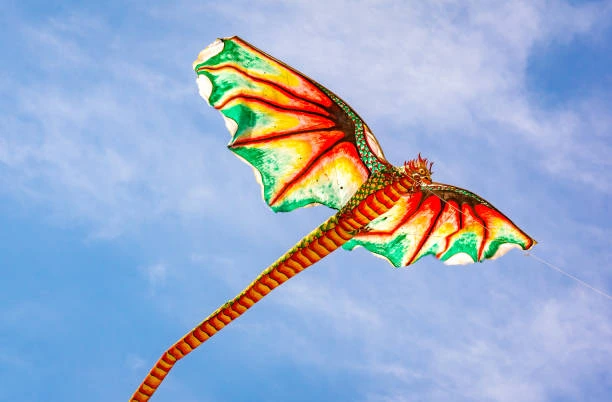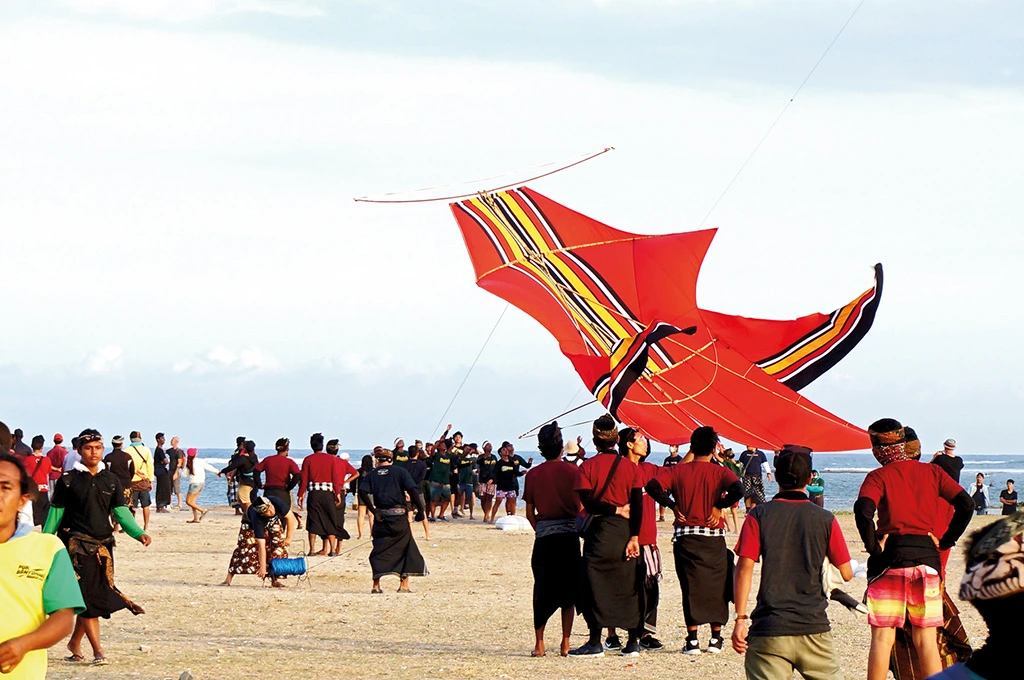The Untold Magic of Balinese Kites: 7 Fascinating Truths Behind a Sacred Artform


Introduction: More Than Just Play
When the dry season arrives in Bali, the skies come alive with vibrant colors and dramatic shapes dancing in the wind. To the untrained eye, they may seem like simple toys or seasonal entertainment—but in truth, Balinese Kites are much more than that. These magnificent creations are a blend of spiritual offering, artistic tradition, and community pride passed down through generations.
Flying kites in Bali is deeply rooted in the island’s Hindu rituals and local customs. During the dry season, especially around the Galungan and Kuningan holidays, kite flying becomes a spiritual act—symbolizing the connection between humans and the divine. It’s not uncommon to see villagers perform small offerings or ceremonies before launching their kites, as they believe the wind carries their prayers skyward.
This article takes you on a journey through the world of Balinese Kites, exploring their sacred symbolism, traditional craftsmanship, and the powerful cultural identity they carry. Whether you're a curious traveler, a cultural enthusiast, or an expat living in Bali, understanding this airborne tradition will help you see the island from a higher perspective.
The Spiritual Role of Balinese Kites
In Bali, kites do more than decorate the sky—they carry meaning, intention, and prayer. Balinese Kites are often created and flown as spiritual offerings, especially to Lord Vishnu, the Hindu deity believed to protect and sustain the universe. The act of flying a kite isn’t just for fun—it’s a symbolic gesture meant to reach the heavens, inviting harmony between nature, the divine, and the community.
The dry season’s strong winds are seen as sacred, making it the perfect time to send kites skyward as part of ritual practice. The connection between sky (akasha), wind (vayu), and prayer (mantra) is deeply rooted in Hindu cosmology. Villagers often offer canang sari (flower offerings) before launching their kites, believing the wind carries their prayers to the gods.
Balinese Kites also take center stage during major festivals, most notably the Bali Kite Festival in Padang Galak. While the event is competitive, with prizes for size, artistry, and flight control, it remains spiritual at heart. It’s not unusual for teams to pray before flying, seeking blessings for a smooth and graceful performance.
This cultural tradition also connects to larger religious cycles like Galungan and Kuningan, when ancestral spirits return to visit their families. Flying a kite can be a gesture of remembrance or celebration. Though less directly related, even the silence of Nyepi (Balinese New Year) reflects the island’s deep reverence for natural forces—of which wind and sky are vital elements.
Ultimately, Balinese Kites are more than spectacle. They are spiritual messengers, vessels of intention, and reminders of the island’s unique fusion of art and faith—anchoring the heavens to the earth, one gust of wind at a time.
The Three Sacred Shapes: Bebean, Janggan, and Pecukan
Among the many forms of Balinese Kites, three distinct traditional shapes dominate the skies—each carrying deep cultural, spiritual, and technical meaning: Bebean, Janggan, and Pecukan. These aren’t just design preferences—they’re spiritual archetypes representing different forces of nature and human experience.
Bebean: The Fish of Prosperity
Bebean is the most iconic shape in Balinese kite culture. Resembling a giant fish with an arched body and flapping tail, it’s both visually stunning and aerodynamically stable. It often symbolizes prosperity, abundance, and fertility, making it a popular choice for festivals and competitions. Its large wingspan—often more than 10 meters—requires a coordinated team effort to launch and maneuver.
Janggan: The Dragon Spirit
Arguably the most sacred of Balinese Kites, the Janggan is immediately recognizable by its elongated tail, which can stretch over 100 meters. The kite itself features a stylized bird or dragon head, linking it to spiritual guardianship and cosmic balance. Flying a Janggan is believed to maintain harmony between the seen and unseen worlds. The long tail isn’t just decorative—it represents the lifeline between heaven and earth.
Pecukan: The Master’s Challenge
Pecukan is the most technically difficult of the three. Its asymmetrical, banana-like shape causes it to wobble, twist, or crash if not perfectly managed. Symbolically, the Pecukan embodies the unpredictability of life and the value of persistence. Mastering this kite requires patience, intuition, and collective focus, reflecting a deeper philosophical lesson in resilience.
Each of these kite forms represents a different facet of Balinese identity. From the grounded prosperity of the Bebean to the ethereal grace of the Janggan and the test of will embodied by the Pecukan, Balinese Kites are much more than wind-bound art—they are living metaphors.
In every gust of wind that carries them, Balinese Kites express stories of creation, connection, and community that have endured for generations.
Color, Fabric, and Tail: What the Details Mean
Beyond their graceful shapes and airborne beauty, the visual elements of Balinese Kites are layered with meaning—woven tightly with religious symbolism, traditional materials, and ritual purpose.
The most common color scheme for Balinese Kites is tridatu—a sacred tri-color combination in Balinese Hinduism: red, black, and white. These colors represent the divine trinity (Trimurti): Brahma the creator (red), Vishnu the preserver (black), and Shiva the destroyer (white). The presence of these hues is not decorative—it’s a deliberate spiritual choice, invoking protection and balance from the divine.
The materials used to construct Balinese Kites reflect both practicality and heritage. The frames are traditionally made from lightweight bamboo, chosen for its strength and flexibility. The kite surfaces are often made from cotton cloth or synthetic fabric, hand-stitched with careful attention to tension and balance. Every piece is handmade—often by family members working together over weeks.
A striking feature—especially of the Janggan kite—is its tail, which can stretch over 100 meters in length. The tail serves more than an aerodynamic function; it symbolizes the soul’s connection to the divine, fluttering like a serpent through the wind. Villagers believe that when a kite flies smoothly and its tail dances fluidly, the “soul” of the kite is alive—communicating harmony between nature and spirit.
Ultimately, these thoughtful elements elevate Balinese Kites from mere playthings to sacred, symbolic messengers floating between earth and sky.
The People Behind the Sky: Community, Craft, and Competitions
Behind every majestic flight of Balinese Kites is a village united in craft, pride, and tradition. The making and flying of these kites isn’t just an individual hobby—it’s a community affair deeply rooted in the social fabric of Bali.
Each banjar (local village council) often forms its own kite team, known as a sekaa layangan. These teams are made up of men and boys—sometimes spanning three generations—who dedicate weeks to designing, building, and preparing their Balinese Kites. It’s a process that blends engineering skill, artistic expression, and ritual precision.
The highlight of the season is the Bali Kite Festival, held annually in Padang Galak Beach near Sanur. Hundreds of kite teams from across the island gather to compete, not just for trophies but for village honor. The atmosphere is festive and deeply spiritual, with rituals performed before and after each flight.
Competitions are judged across multiple categories:
- Shape and originality
- Flight stability and duration
- Artistic design
- Team coordination and spirit
The pride in Balinese Kites is palpable. Some teams spend months refining their designs, with older generations mentoring the younger in the subtle techniques of frame balancing and tail aerodynamics. Rivalries can be intense, but they are rooted in mutual respect for tradition.
The craftsmanship behind Balinese Kites is more than a pastime—it’s an inheritance. Through every sweep of the sky and every cheer from the ground, the people of Bali keep a sacred legacy alive. In doing so, they affirm their identity, strengthen their community, and pass on values that rise higher than even the largest kite.
Rules, Rituals & Kite Etiquette
The act of flying Balinese Kites is not just a cultural display—it is often a sacred practice governed by rituals and unwritten rules passed down for generations. Before launching a kite into the sky, many Balinese will perform small ceremonies using canang sari (daily offerings of flowers, incense, and food) to ask for protection and smooth winds. These blessings are meant to honor the spirits of nature and ensure that the flight does not disrupt cosmic harmony.
Respect for these rituals is essential, especially for outsiders. Tourists and expats interested in flying Balinese Kites are encouraged to observe first, ask questions, and never interrupt a prayer or blessing in progress. In some areas, especially near temples or sacred sites, kite flying is prohibited on specific religious days—to avoid disturbing ceremonies or drawing negative spiritual attention.
Kite etiquette also includes respecting airspace. During festival season, banjars may reserve certain fields or beaches for their teams, and encroaching without permission is considered disrespectful.
Understanding the rules and spiritual significance behind Balinese Kites helps preserve the authenticity of this tradition. By flying with intention and awareness, you honor not just the craft—but the culture that sustains it.
Where to See or Buy Authentic Balinese Kites
To witness the true artistry of Balinese Kites, there’s no better place than Padang Galak Beach in Denpasar during kite season, which typically runs from July to October. This is the heart of the annual Bali Kite Festival, where teams from all over the island showcase their largest, most symbolic creations. You can also spot impressive kites in Sanur, Tabanan, and rural village fields where locals practice flying year-round.
For those interested in owning or photographing Balinese Kites, it’s important to support ethical, traditional kite makers. Some family-owned workshops in Denpasar and Gianyar have been crafting kites for generations. They offer authentic designs—often customizable—and welcome curious visitors with respect.
When purchasing Balinese Kites as a souvenir, consider the size and materials—many large ones are meant for ceremonial use and may not survive international travel unless disassembled and packed properly. If you're unsure, ask the artisan for advice on how to transport it respectfully.
Always remember: these kites are cultural treasures, not novelty items. By buying from local craftspeople and asking before photographing, you help keep this airborne artform alive, authentic, and sustainable.
Conclusion: The Spirit of the Wind
Balinese Kites are more than colorful shapes in the sky—they are living expressions of spirituality, craftsmanship, and community. From their sacred origins to the skilled hands that build them, every element tells a story of harmony between people, nature, and the divine.
Flying a kite in Bali is not a passing trend or tourist attraction; it is a timeless tradition carried by the wind and protected by generations of families. Whether you're watching from the beach, photographing a festival, or carefully bringing one home, you are participating in a legacy that soars beyond the clouds.
By honoring the rituals, respecting the makers, and supporting local artisans, you can help ensure that Balinese Kites continue to inspire wonder—for both locals and global visitors—for many seasons to come.
Let the wind lift your curiosity, and may it carry your respect in return.
Source:

.png)









